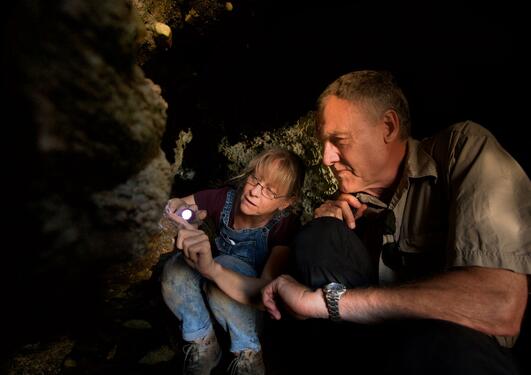Pioneering world-class research
The SapienCE Centre of Excellence is built around a carefully selected interdisciplinary team of archaeologists, climatologists and psychologists. The team aims to increase our understanding of how and when Homo sapiens evolved into who we are today.

Main content
Within the next decade, the SapienCE team will investigate Middle Stone Age (MSA) archaeological sites by looking in detail at the evidence, layer by layer, site by site.
High-resolution records
The investigations will document an exceptional integration of securely dated, high-resolution records of early human cultural, social, technological and subsistence behaviours with global, regional and site-based palaeoenvironmental information. The aim is to use this holistic approach to provide groundbreaking insight into the diverse aspects of what it means to be human.
Access to unlock the past
The SapienCE team has exclusive access to Blombos Cave, Klasies River main site and the Klipdrift Complex; sites that contain the key for unlocking the past. Blombos Cave is known as the cradle of human culture. Engraved ochre, shell beads and the world's earliest human drawing are amongst the significant finds from this cave. Early modern humans occupied the cave between 100 000 - 70 000 years ago.
Klasies River main site is famous for its numerous human fossils and the extensive 20-meter archaeological archive of early human behaviour. Early modern humans occupied the site between 120 000 - 59 000 years ago. The Klipdrift Complex covers both the Middle and Later Stone Age. The site is particularly associated with the Howiesons Poort techno-complex dating to approximately 65 000 - 59 000 years ago.
Read about our seven key research questions and find out more about the individual research projects linked to each question.




